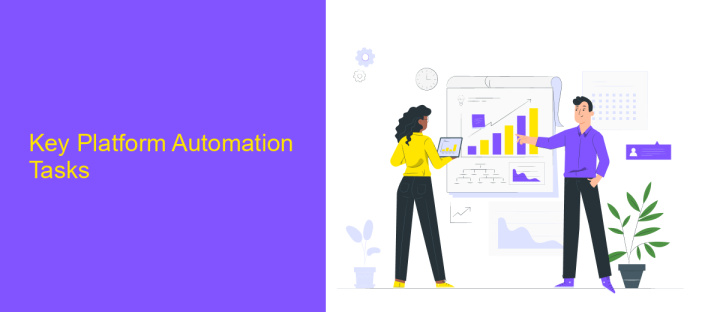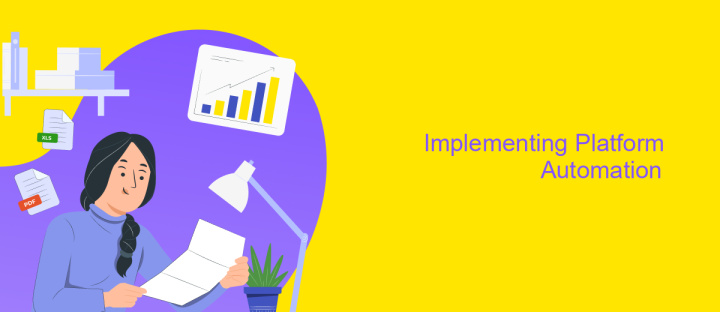Platform Automation Tasks
In today's fast-paced digital landscape, platform automation has become a cornerstone for enhancing operational efficiency and scalability. By automating routine tasks, organizations can reduce human error, optimize resource allocation, and accelerate deployment cycles. This article delves into the essential tasks involved in platform automation, exploring how they streamline processes, improve system reliability, and empower teams to focus on strategic initiatives that drive innovation and growth.
Introduction to Platform Automation
Platform automation is revolutionizing the way organizations manage and optimize their IT infrastructure. By automating repetitive tasks, businesses can enhance efficiency, reduce human error, and free up resources for more strategic activities. This transformation is crucial as companies strive to remain competitive in an increasingly digital world. Automation allows platforms to operate seamlessly, adapting to changing demands and scaling effortlessly.
- Streamlined operations: Automation simplifies complex processes, ensuring consistent and reliable outcomes.
- Cost efficiency: By reducing manual intervention, organizations can cut down on labor costs and minimize downtime.
- Scalability: Automated platforms can easily scale up or down, accommodating fluctuating workloads and business needs.
- Enhanced accuracy: Automation reduces the risk of human error, leading to improved data integrity and decision-making.
As technology continues to evolve, the role of platform automation becomes increasingly significant. It empowers businesses to innovate and respond swiftly to market changes, ultimately driving growth and success. Embracing automation is not just a trend but a necessity for modern enterprises aiming to thrive in a fast-paced, technology-driven landscape.
Key Platform Automation Tasks

Platform automation tasks are essential for streamlining operations and enhancing efficiency. One key task involves automating routine processes to minimize manual intervention and reduce errors. This includes setting up automated workflows for data management, system monitoring, and resource allocation. By implementing these automated solutions, businesses can ensure consistent performance and focus on strategic growth. Additionally, automation facilitates scalability, allowing platforms to handle increased workloads without compromising on quality or speed.
Another critical aspect is the integration of various services and applications. Seamless integration ensures that data flows smoothly between systems, enhancing communication and collaboration. Tools like ApiX-Drive can be instrumental in this process, offering a user-friendly interface to connect disparate systems effortlessly. By leveraging such services, organizations can automate data transfers, synchronize information in real-time, and maintain a cohesive digital ecosystem. Ultimately, these automation tasks are vital for optimizing platform performance and achieving operational excellence.
Benefits of Platform Automation

Platform automation has become a cornerstone for modern businesses aiming to enhance efficiency and streamline operations. By automating repetitive and time-consuming tasks, companies can focus on innovation and strategic growth rather than mundane processes. This shift not only reduces human error but also ensures consistency across various operations, leading to improved service quality and customer satisfaction.
- Increased Efficiency: Automation significantly speeds up processes, allowing for quicker task completion and freeing up valuable human resources for more critical thinking tasks.
- Cost Reduction: By minimizing manual labor and reducing errors, automation leads to substantial cost savings over time.
- Scalability: Automated platforms can easily scale operations to meet growing business demands without the need for proportional increases in workforce.
- Enhanced Accuracy: Automation ensures precision in tasks, reducing the likelihood of mistakes that can occur with manual handling.
- Improved Compliance: Automated systems can be programmed to adhere to regulatory requirements, ensuring compliance and reducing legal risks.
Incorporating platform automation is not just about keeping up with technological trends. It’s about fostering a proactive business environment that is agile and responsive to market changes. By embracing these technologies, organizations position themselves for sustained success in a competitive landscape.
Implementing Platform Automation

Implementing platform automation involves streamlining and optimizing processes to enhance efficiency and reduce manual intervention. It begins with identifying repetitive tasks that can be automated, thereby freeing up valuable resources and minimizing human error. By leveraging advanced tools and technologies, organizations can ensure consistent and reliable operations across their platforms.
The first step in this journey is to assess the current workflows and pinpoint areas where automation can provide the most significant impact. This assessment should be followed by designing a tailored automation strategy that aligns with the organization's goals and technical capabilities. The integration of automation tools should be seamless, ensuring minimal disruption to existing systems.
- Identify key processes suitable for automation.
- Develop a comprehensive automation strategy.
- Select appropriate tools and technologies.
- Implement and monitor automated workflows.
Once implemented, continuous monitoring and optimization are crucial to maintaining the effectiveness of automated processes. Regularly reviewing the performance of automation systems allows organizations to adapt to changing needs and incorporate new technologies as they emerge. This proactive approach ensures that platform automation remains a valuable asset in achieving operational excellence.
Future Trends in Platform Automation
As technology continues to evolve, platform automation is set to become more sophisticated and integral to business operations. One of the emerging trends is the increased use of artificial intelligence and machine learning to enhance automation capabilities. These technologies enable platforms to learn from data, predict outcomes, and make decisions autonomously, reducing the need for human intervention. This shift not only boosts efficiency but also allows for more personalized and adaptive solutions tailored to specific business needs.
Another significant trend is the integration of diverse systems and applications through automation platforms. Services like ApiX-Drive are at the forefront of this movement, providing seamless connectivity between various software and tools. This integration simplifies workflows and enhances data exchange, enabling businesses to operate more cohesively. As organizations continue to embrace digital transformation, the demand for robust and flexible integration solutions will rise, making platform automation a critical component in achieving operational excellence and competitive advantage.
FAQ
What is platform automation, and why is it important?
How can I start automating tasks on my platform?
What types of tasks can be automated on a platform?
How does platform automation affect data security?
Can automation be customized to fit specific business needs?
Apix-Drive is a universal tool that will quickly streamline any workflow, freeing you from routine and possible financial losses. Try ApiX-Drive in action and see how useful it is for you personally. In the meantime, when you are setting up connections between systems, think about where you are investing your free time, because now you will have much more of it.

